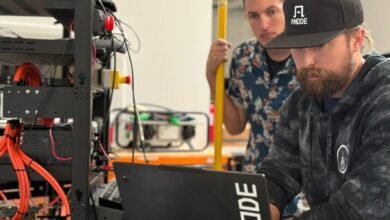AI-Designed Viruses & Hydrogen Industry Setbacks

▼ Summary
– AI has been used to design functional genomes for viruses that can replicate and kill bacteria.
– This research could lead to new medical treatments and accelerate work on engineered cells.
– Experts see it as a significant step toward creating AI-designed life forms.
– Clean hydrogen faces challenges with project cancellations and delays, especially in the US.
– Despite setbacks, growth opportunities exist in markets like China and emerging sectors.
The potential for artificial intelligence to design functional genetic sequences marks a significant leap beyond its more familiar creative applications. Researchers in California have successfully used AI to generate novel viral genomes, several of which proved capable of replicating and destroying targeted bacteria. This breakthrough, detailed in a recent preprint study, opens new pathways for developing advanced treatments and accelerating progress in synthetic biology. While the immediate focus remains on therapeutic uses, the achievement represents a notable move toward AI-generated biological systems.
In parallel, the clean hydrogen sector is confronting substantial operational challenges despite its promising role in the global shift toward sustainable energy. Often described as a versatile solution for decarbonizing hard-to-abate industries, from agriculture to aviation, hydrogen production using low-emission methods has encountered setbacks. A new report from the International Energy Agency highlights a wave of project cancellations and delays, particularly in the United States where changes to tax incentives and reduced renewable energy support have slowed momentum.
Still, the outlook isn’t entirely dim. Growth continues in regions like China, and emerging markets may soon provide vital opportunities for expansion. Three key factors will shape hydrogen’s trajectory in the coming year: policy stability, technological cost reductions, and the scaling of production infrastructure. How these elements evolve will determine whether hydrogen can fulfill its potential as a cornerstone of the clean energy transition.
(Source: Technology Review)




